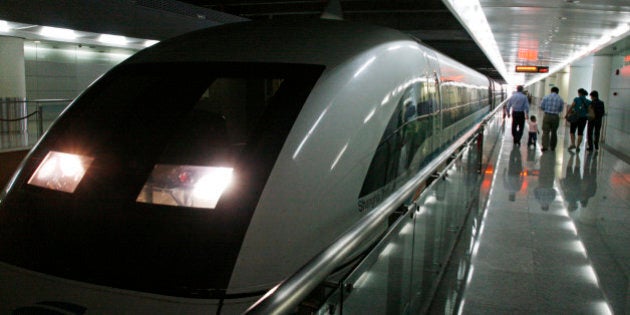
I spend a lot of time talking about airports and air travel, so it was a pleasure to attend a recent event at the Toronto Region Board of Trade where the discussion centered on aviation and transit. The need to have simple transit options to, from and around any airport is a growing area of importance all around the world. One solution for many airports has been to develop "multi-modal" transportation hubs: a network that uses everything from regional trains and buses, to local streetcars and light rail to move people and goods beyond the airport boundaries into employment areas and local communities.
Leading cities like New York, London, Paris, Frankfurt, Amsterdam, Hong Kong and Shanghai have all focused on improving "people moving" for some time now, realizing that their airports have become the centre of their region's connectivity. In a world where business is increasingly conducted between mega-regions, getting to and from the airport quickly is an economic advantage. In addition, as engines of economic activity, hub airports are often the anchor employer in a zone that depends on good ground transportation connections for travellers and employees alike.
Let's look at some of the key benefits of multi-modal airport hubs:
- Global airport hubs mean job creation
Once upon a time, cities were built around ports, then rail stations. Today, airports are the gateway to the world, which explains why so many corporate head offices, as well as other types of businesses, often locate close to the airport. Here in Toronto, the employment zone around Toronto Pearson is second only to the downtown core in terms of jobs in Canada, with 300,000 people working in its vicinity. Many of these workers are employed at the airport directly or at businesses in the surrounding area.
Across the globe, Zhengzhou, China -- home to one of the country's newest airports -- is a special economic zone that has become a massive industrial, commercial and logistics hub built specifically with air transport at its core. This zone now is five times the size of Manhattan and generates nearly US$6 billion in imports and exports each year. In the Netherlands, the Amsterdam Airport Schiphol area is home to more than 1,000 businesses, while the area around Dallas-Fort Worth International Airport holds the headquarters of nine Fortune 1,000 companies.
- Growing airports need modern transit
The growing employment zones around airports translate into movement of more people and goods. Given that air traffic is expected to double in North America over the next 30 years, we're faced with a massive prosperity dilemma: airports need help getting people out of cars and onto transit. Today, Vancouver Airport is the national leader for increased transit use to and from the airport. With the introduction of the Canada Line, passengers have a simpler way of accessing the airport and its surrounding region. However, more than 70 per cent of people still arrive at Vancouver's airport by car. In Toronto, we have even more work to do -- approximately 92 per cent of travellers and workers arrive in cars every day.
At Paris' Charles De Gaulle airport, passengers have the luxury of many different transit options, which has resulted in only 40 per cent of travellers arriving by car. Back in Toronto, the road network around the airport is home to more car trips than anywhere else in the country, and represents the highest value roads in Ontario with more than $750 million in goods moving through them each day.
- Well-connected systems improve our quality of life
Airports are the future of the modern city region. They are small cities that create employment for thousands of people, from air traffic controllers and baggage handlers, to pilots and taxi drivers. Without connectivity, getting to and from flights becomes an issue, but getting to and from work can be an even bigger challenge. It stands to reason that a well-connected airport serves its passengers and its region well.
So, how do we get more people out of their cars and into transit to allow for the road networks around airports to become less congested? It's simple: our transit agencies and city planners need to factor in multi-modal connections to airports.
Follow HuffPost Canada Blogs on Facebook
MORE ON HUFFPOST: